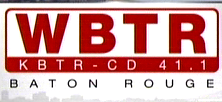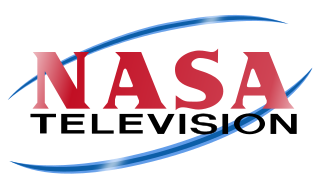Related Research Articles
Television in the United Kingdom started in 1936 as a public service which was free of advertising. Currently, the United Kingdom has a collection of free-to-air, free-to-view and subscription services over a variety of distribution media, through which there are over 480 channels for consumers as well as on-demand content. There are six main channel owners who are responsible for most material viewed. There are 27,000 hours of domestic content produced a year at a cost of £2.6 billion. Since 24 October 2012, all television broadcasts in the United Kingdom have been in a digital format, following the end of analogue transmissions in Northern Ireland. Digital content is delivered via terrestrial, satellite and cable, as well as over IP. As of 2003, 53.2% of households watch through terrestrial, 31.3% through satellite, and 15.6% through cable.

Television New Zealand, more commonly referred to as TVNZ, is a state-owned television network that is broadcast throughout New Zealand and parts of the Pacific region. Although the network identifies as a national, part-public broadcaster, it is fully commercially funded.
Free-to-air (FTA) are television (TV) and radio services broadcast in clear (unencrypted) form, allowing any person with the appropriate receiving equipment to receive the signal and view or listen to the content without requiring a subscription, other ongoing cost, or one-off fee. In the traditional sense, this is carried on terrestrial radio signals and received with an antenna.

KATC, virtual channel 3, is a dual ABC/CW+-affiliated television station licensed to Lafayette, Louisiana, United States. The station is owned by the E. W. Scripps Company. KATC's studios are located on Eraste Landry Road on Lafayette's south side, and its transmitter is located near Branch, Louisiana.
West Virginia Public Broadcasting (WVPB) is the public television and radio state network serving the U.S. state of West Virginia. It is owned by the West Virginia Public Broadcasting Authority, an agency of the state government that holds the licenses for all Public Broadcasting Service (PBS) and National Public Radio (NPR) member stations licensed in West Virginia. It is headquartered in Charleston with studios in Morgantown and Beckley.
WWL-TV, virtual channel 4, is a CBS-affiliated television station licensed to New Orleans, Louisiana, United States. The station is owned by Tegna Inc., as part of a duopoly with Slidell-licensed MyNetworkTV affiliate WUPL. The two stations share studios on Rampart Street in the historic French Quarter district and transmitter facilities on Cooper Road in Terrytown, Louisiana.

WVUE-DT, virtual channel 8, is a Fox-affiliated television station licensed to New Orleans, Louisiana, United States. The station is owned by Gray Television. WVUE's primary studios are located on Jefferson Davis Parkway in the city's Gert Town section, with a secondary studio within the Benson Tower in downtown New Orleans; its transmitter is located on Magistrate Street in Chalmette. On cable, WVUE is available on Cox Communications channel 9.

WDSU, virtual channel 6, is an NBC-affiliated television station licensed to New Orleans, Louisiana, United States. The station is owned by the Hearst Television subsidiary of Hearst Communications. WDSU's studios are located on Howard Avenue in the city's Central Business District, and its transmitter is located on East Josephine Street in Chalmette. On cable, the station is available on Cox Communications channel 7 in both standard and high definition.
WGNO, virtual and UHF digital channel 26, is an ABC-affiliated television station licensed to New Orleans, Louisiana, United States. The station is owned by Nexstar Media Group, as part of a duopoly with CW affiliate WNOL-TV. The two stations share studios at The Galleria on Galleria Drive in Metairie; WGNO's transmitter is located on East Josephine Street in Chalmette. On cable, the station is available on Cox Communications and AT&T U-verse channel 11.
WUPL, virtual channel 54, is a MyNetworkTV-affiliated television station serving New Orleans, Louisiana, United States that is licensed to Slidell. The station is owned by Tegna Inc., as part of a duopoly with New Orleans-licensed CBS affiliate WWL-TV. The two stations share studios on Rampart Street in the historic French Quarter district and transmitter facilities on Cooper Road in Terrytown, Louisiana. There is no separate website for WUPL; instead, it is integrated with that of sister station WWL-TV.
WYES-TV, virtual channel 12, is a Public Broadcasting Service (PBS) member television station licensed to New Orleans, Louisiana, United States. The station is owned by the Greater New Orleans Educational Television Foundation. WYES-TV's studios are located on Navarre Avenue in the city's Navarre neighborhood, and its transmitter is located on Magistrate Street in Chalmette. On cable, the station is available on Cox Communications channel 12 in both standard and high definition.
Louisiana Public Broadcasting (LPB) is a state network of Public Broadcasting Service (PBS) member television stations serving the U.S. state of Louisiana. The stations are operated by the Louisiana Educational Television Authority, an agency created by the executive department of the Louisiana state government which holds the licenses for six of the seven PBS member stations licensed in the state. Louisiana Public Broadcasting's studio facilities and offices are located on Perkins Road in Baton Rouge.

KTAL-TV, virtual channel 6, is an NBC-affiliated television station serving Shreveport, Louisiana, United States that is licensed to Texarkana, Texas. The station is owned by Nexstar Media Group, which also operates two Shreveport-licensed stations—Mission Broadcasting-owned Fox affiliate KMSS-TV and White Knight Broadcasting-owned MyNetworkTV affiliate KSHV-TV —under separate shared services agreements (SSAs).

The Paley Center for Media, formerly the Museum of Television & Radio (MT&R) and the Museum of Broadcasting, founded in 1975 by William S. Paley, is an American cultural institution in New York and Los Angeles dedicated to the discussion of the cultural, creative, and social significance of television, radio, and emerging platforms for the professional community and media-interested public.

KBTR-CD, virtual and UHF digital channel 36, is a low-powered, Class A This TV-affiliated television station licensed to Baton Rouge, Louisiana. The station is owned by Louisiana Television Broadcasting, as part of a duopoly with ABC affiliate WBRZ-TV. The station is seen on Cox Communications and AT&T U-verse. Its transmitter is based on the property of WBRZ-TV, where its studios are also co-located, just south of downtown.

SES Platform Services GmbH was a subsidiary company of SES based in Betzdorf, Luxembourg. From its headquarters in Unterföhring near Munich, Germany, SES Platform Services operated a broadcasting centre, providing a wide range of services, including content management, playout, encryption, multiplexing, satellite uplinks and other digital TV media broadcast services for the broadcast industry.

The Public Broadcasting Service (PBS) is an American public broadcaster and television program distributor. It is a nonprofit organization and the most prominent provider of educational television programming to public television stations in the United States, distributing series such as American Experience, America's Test Kitchen, Antiques Roadshow, Arthur, Barney & Friends, Clifford the Big Red Dog, Downton Abbey, Finding Your Roots, Frontline, The Magic School Bus, Masterpiece Theater, Mister Rogers' Neighborhood, Nature, Nova, the PBS NewsHour, Reading Rainbow, Sesame Street, Teletubbies, Keeping up Appearances and This Old House.

NASA TV is the television service of the National Aeronautics and Space Administration (NASA). It is broadcast by satellite with a simulcast over the Internet. Local cable television providers across the United States and amateur television repeaters may carry NASA TV at their own discretion, as NASA-created content is considered a work of the U.S. government and is within the public domain. NASA TV is also available via various cable, satellite, and over-the-top media services around the world. The network was formally created in the early 1980s to provide NASA managers and engineers with real-time video of missions. NASA has operated a television service since the beginning of the space program for archival purposes, and in order to provide media outlets with video footage.
Crescent City Radio is an internet radio station based in New Orleans serving Metropolitan New Orleans and southern Mississippi as well as globally through its internet presence as a Freeform radio station. The station broadcasts a diverse offering of music along with locally produced entertainment and talk programs. Music genres typically aired include urban contemporary, mainstream urban, adult contemporary, swamp pop, gospel, and Latin CHR. The station is managed and operated by the Music Industry Studies Program of the College of Music and Fine Arts at Loyola University New Orleans.
The American Archive of Public Broadcasting (AAPB) is a collaboration between the Library of Congress and WGBH Educational Foundation, founded through the efforts of the Corporation for Public Broadcasting. The AAPB is a national effort to digitally preserve and make accessible historically significant public radio and television programs created over the past 70+ years. The archive comprises over 120 collections from contributing stations and original producers from US states and territories. As of April 2020, the collection includes nearly 113,000 digitized items preserved on-site at the Library of Congress, and 53,000 items in the collection are streaming online in the AAPB Online Reading Room.
References
- 1 2 3 4 5 6 7 8 9 "About LDMA". Louisiana Digital Media Archive. Retrieved May 18, 2015.
- ↑ "Louisiana Public Broadcasting". American Archive of Public Broadcasting . Retrieved September 10, 2020.
- 1 2 3 4 Barnes, Sophia (February 2, 2015). "Louisiana network launches online archive of historic video". Current . Retrieved May 18, 2015.
- 1 2 3 4 Sues, Brock (January 20, 2015). "Louisiana Digital Media Archive chronicles state history". WBRZ-TV . Retrieved May 18, 2015.
- 1 2 3 "LPB launches Louisiana Digital Media Archive". American Archive of Public Broadcasting. Library of Congress and WGBH Media Library & Archives. January 21, 2015. Retrieved May 18, 2015.
- 1 2 "LPB AND THE SECRETARY OF STATE'S OFFICE LAUNCH THE LOUISIANA DIGITAL MEDIA ARCHIVE" (Press release). Secretary of State of Louisiana. January 20, 2015.
- 1 2 3 4 5 6 7 Massa, Dominic (January 20, 2015). "Secretary of State, LPB unveil new digital media archive". WWL-TV . Retrieved May 18, 2015.
- 1 2 3 Bergeron, Judy (May 2, 2015). "LPB, State Archives launch Louisiana Digital Media Archive to house and preserve historic video footage". The Advocate . Retrieved May 18, 2015.
- 1 2 McClelland, Alex (March 9, 2015). "LPB launches Louisiana Digital Media Archive". Crawford Media Services. Retrieved May 18, 2015.
- ↑ Fryou, Matthew (January 20, 2015). "Louisiana Digital Media Archive now available to the public". WAFB . Retrieved May 18, 2015– via WSMV-TV.
- ↑ Southern, Michelle (January 21, 2015). "Secretary of State launches digital media archive documenting Louisiana history". Louisiana Radio Network . Retrieved May 18, 2015.
- ↑ "LPB and SoS Office launch LA Digital Media Archive". KALB-TV. January 21, 2015. Retrieved May 18, 2015.